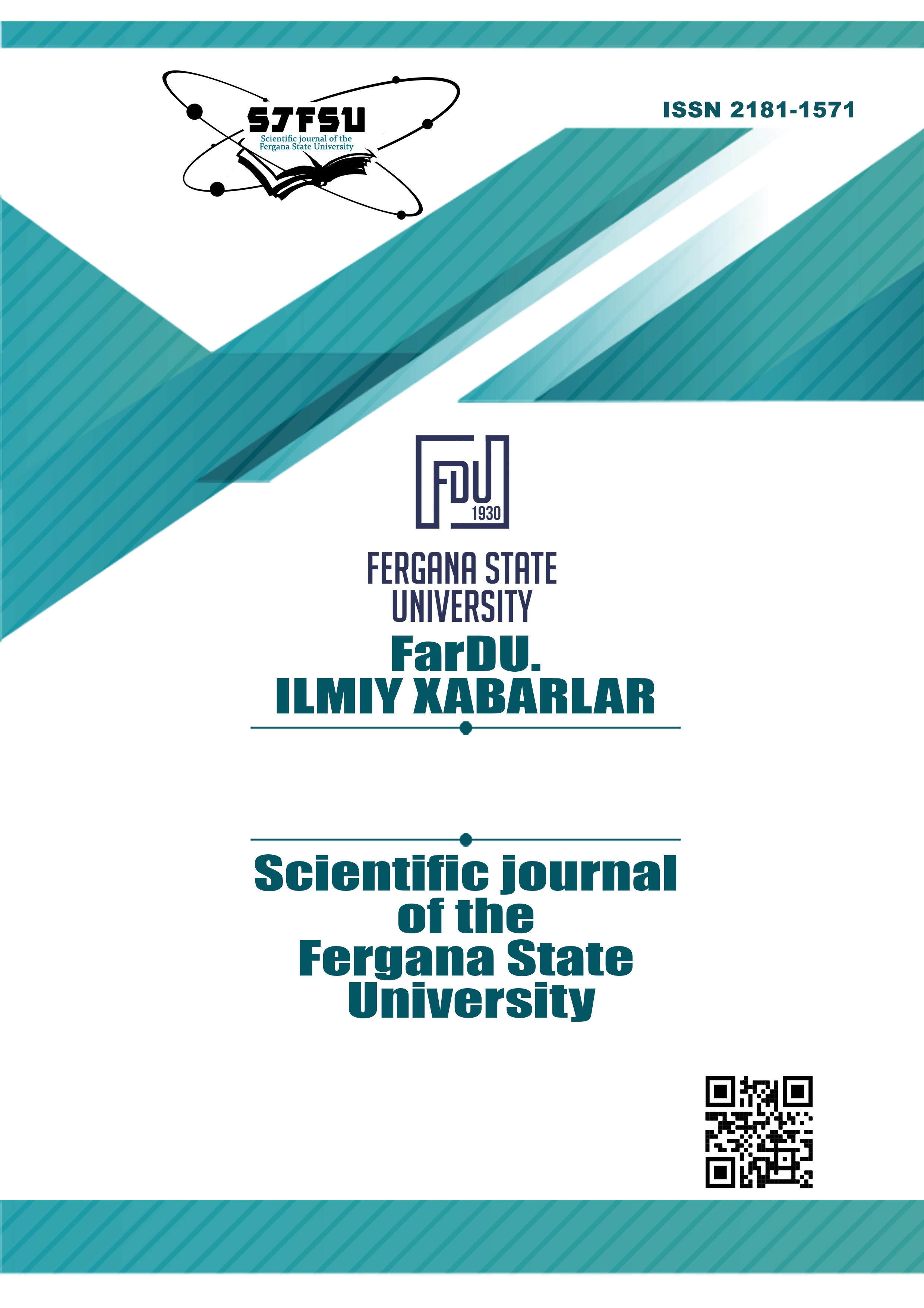ANALYZING THE SOLUTION OF THE BORDER PROBLEMS OF CENTRAL ASIA USING THE THEORY OF CONSTRUCTIVISM
Keywords:
Central Asia, border disputes, constructivism, social construction, international relations, identity, norms, values, conflict resolution, cultural ties, historical ties, Fergana Valley, Caspian Sea, Amu Darya, Syr Darya, territorial disputes, delimitation, Soviet Union, ethnic diversity.Abstract
This article discusses the use of the theory of constructivism as a framework for understanding the root causes of border disputes in Central Asia. Constructivism emphasizes the importance of ideas, norms, and values in shaping international relations, and suggests that conflict resolution can be achieved through dialogue and the creation of common norms and values. By applying this approach to the border conflicts in Central Asia, the article suggests that the region's rich history and cultural diversity should be highlighted as a means of fostering cooperation and finding joint solutions to border problems. The article provides an overview of Central Asia, its history, and the border disputes that have plagued the region since the collapse of the Soviet Union in 1991. It also discusses the challenges posed by the artificial borders created during the Soviet era, which have led to the separation of traditional communities and the emergence of ethnoculturally diverse territories.
Moreover, this article demonstrates that a new stage in the cooperation of the Central Asian countries has begun as a result of the initiatives in foreign policy taken by the President of the Republic of Uzbekistan Shavkat Mirziyoyev, which determine the Central Asia a priority direction of Uzbekistan's foreign policy.
References
Wendt, Alexander. "Social Theory of International Politics", Cambridge University Press 1999
Schelling, Thomas. The Strategy of Conflict, 1980.
Дмитриева Е.Л. Постсоветская центральная Азия: этнотерриториальные споры и пограничные конфликты. 2018
На историческом рубеже. Сборник о национально-государственном размежевании Средней Азии Нашр: Тошкент - 1924.
Cornell, Stephen, and Douglas Hartmann. Ethnicity and Race: Making Identities in a Changing World, 2007.
Rumer, E. B. "Central Asia in the Era of the New Great Game." Foreign Affairs, vol. 95, 2016, pp. 32-41.
"India, Bangladesh Exchange 162 Enclaves, Solve Border Dispute" published by Voice of America News on July 31, 2015.
"How Ethiopia and Eritrea made peace after 20 years of border conflict" published by the World Economic Forum in 2019.
Geir Hønneland and Oystein Jensen, "The Norway-Russia Maritime Delimitation Agreement: A Breakthrough in the Barents Sea", published in Ocean Development & International Law in 2011.
Xalilov, Bahodir and Jo‘rayev, Sayfiddin. "Markaziy Osiyo hamkorligi tashkiloti." URL manzil: https://uz.wikipedia.org/wiki/Markaziy_Osiyo_hamkorligi_tashkiloti.
Shavkat Mirziyoev. "Milliy taraqqiyot yoʼlimizni qatʼiyat bilan davom ettirib, yangi bosqichga ko‘taramiz." T.1, O‘zbekiston, 2018, p. 17.
"Davlat Chegaralarini Rasmiylashtirishni Jadallashtirish – O‘zbekiston Tashqi Siyosatining Ustuvor Yo‘nalishi." 17 August 2018, https://xs.uz/uz/post/davlat-chegaralarini-rasmijlashtirishni-zhadallashtirish-ozbekiston-tashqi-siyosatining-ustuvor-jonalishi.
"Markaziy Osiyoning So‘nggi Chegara Bahsi Qachon Hal Bo‘ladi?." 14 February 2023, https://www.amerikaovozi.com/a/6961497.html.
Абдулло РАХНАМО Таджикско-кыргызские пограничные конфликты. Кто на самом деле агрессор? Медиа группа «ASIA-Plus» (Душанбе, Таджикистан)23 ноября, 2022 https://www.asiaplustj.info/ru/news/tajikistan/security/20221123/tadzhiksko-kirgizskie-pogranichnie-konflikti-kto-na-samom-dele-agressor
Downloads
Published
Issue
Section
License
Copyright (c) 2023 Scientific journal of the Fergana State University

This work is licensed under a Creative Commons Attribution-NonCommercial-NoDerivatives 4.0 International License.
How to Cite
Most read articles by the same author(s)
- Javohir Sultonov, Farhod Mamajonov, THE UNIQUENESS OF THE THEORY OF CONSTRUCTIVISM IN INTERNATIONAL RELATIONS , Scientific journal of the Fergana State University: No. 1 (2023): Scientific journal of the Fergana State University (Social humanities sciences)
- , ANALYZING THE SOLUTION OF THE BORDER PROBLEMS OF CENTRAL ASIA USING THE THEORY OF CONSTRUCTIVISM , Scientific journal of the Fergana State University: No. 2 (2023): Scientific journal of the Fergana State University (Social humanities sciences)
- , BO‘LAJAK TARIX O‘QITUVCHILARINI TAYYORLASH JARAYONIGA AKSIOLOGIK YONDASHUVNI JORIY ETISHNING METODIK XUSUSIYATLARI , Scientific journal of the Fergana State University: No. 5 (2024): Scientific journal of the Fergana State University (Social humanities sciences)
- , , , , , MINERALOGICAL COMPOSITION OF LIGHT SERIOZEMS OF SOUTHERN FERGANA AND SIGNIFICANCE, DIVISION INTO CLASSES OF MINERAL FERTILIZERS , Scientific journal of the Fergana State University: 2024: KONFERENSIYA. "TUPROQ BIOGEOKIMYOSI – BIOSFERANING BARQAROR RIVOJLANISHI VA MUHOFAZASI" xalqaro ilmiy anjuman.
- , THE FORMATION OF THE KHWARAZM EMPIRE AND THE MILITARY-DIPLOMATIC STRATEGY OF MUHAMMAD KHWARAZMSHAH BEFORE THE MONGOL INVASION , Scientific journal of the Fergana State University: No. 2 (2025): FarDU ilmiy xabarlari jurnali (IJTIMOIY FANLAR)
- , , , , , PRODUCTION OF NITROGEN FERTILIZERS AND THEIR ROLE IN CHANGING THE AGROCHEMICAL PROPERTIES OF LIGHT SERIOZEMS FORMED IN SOUTHERN FERGANA , Scientific journal of the Fergana State University: 2024: KONFERENSIYA. "TUPROQ BIOGEOKIMYOSI – BIOSFERANING BARQAROR RIVOJLANISHI VA MUHOFAZASI" xalqaro ilmiy anjuman.
- , A HISTORICAL ANALYSIS OF DIPLOMATIC AND MILITARY RELATIONS BETWEEN GENGHIS KHAN AND THE JIN DYNASTY , Scientific journal of the Fergana State University: No. 2 (2025): FarDU ilmiy xabarlari jurnali (IJTIMOIY FANLAR)

